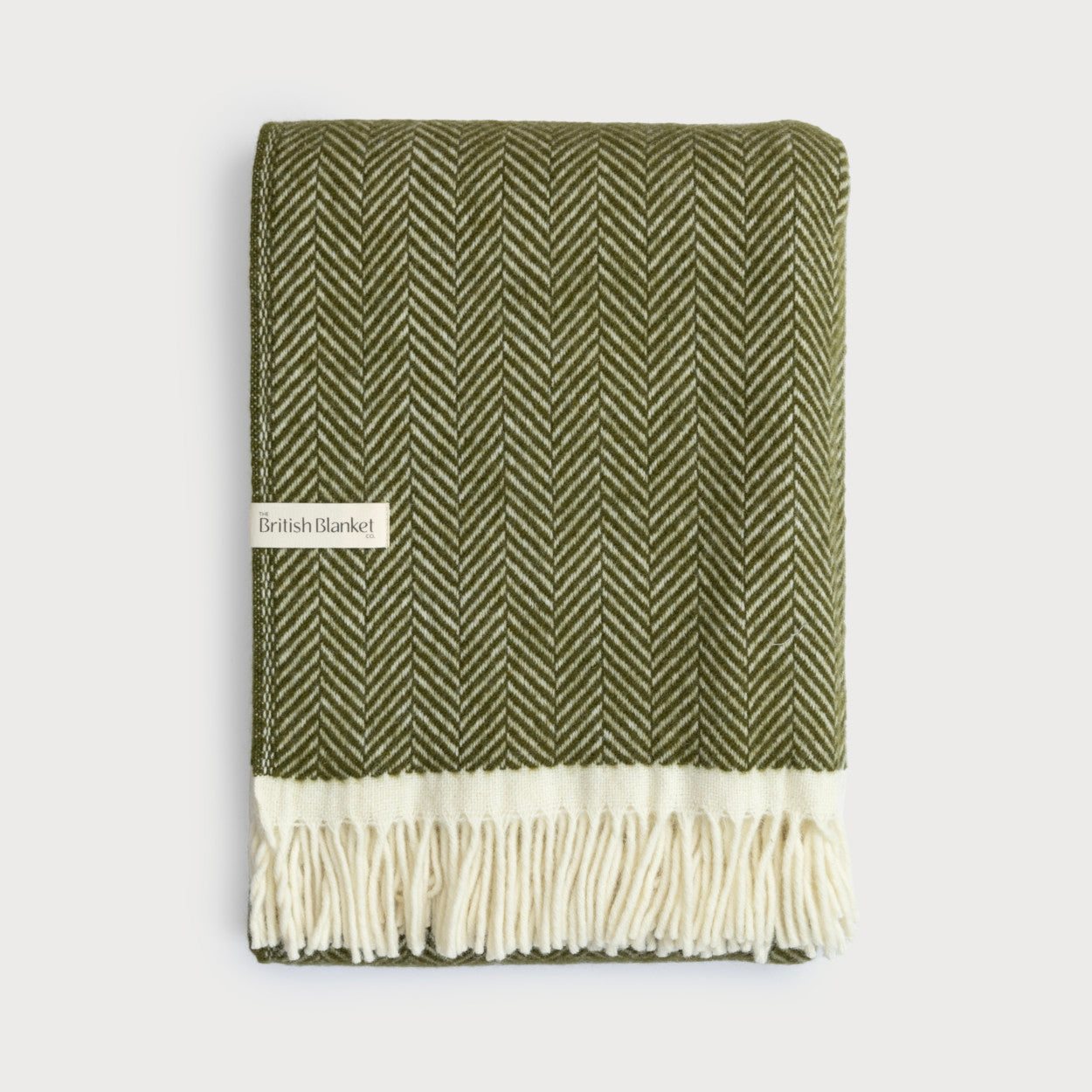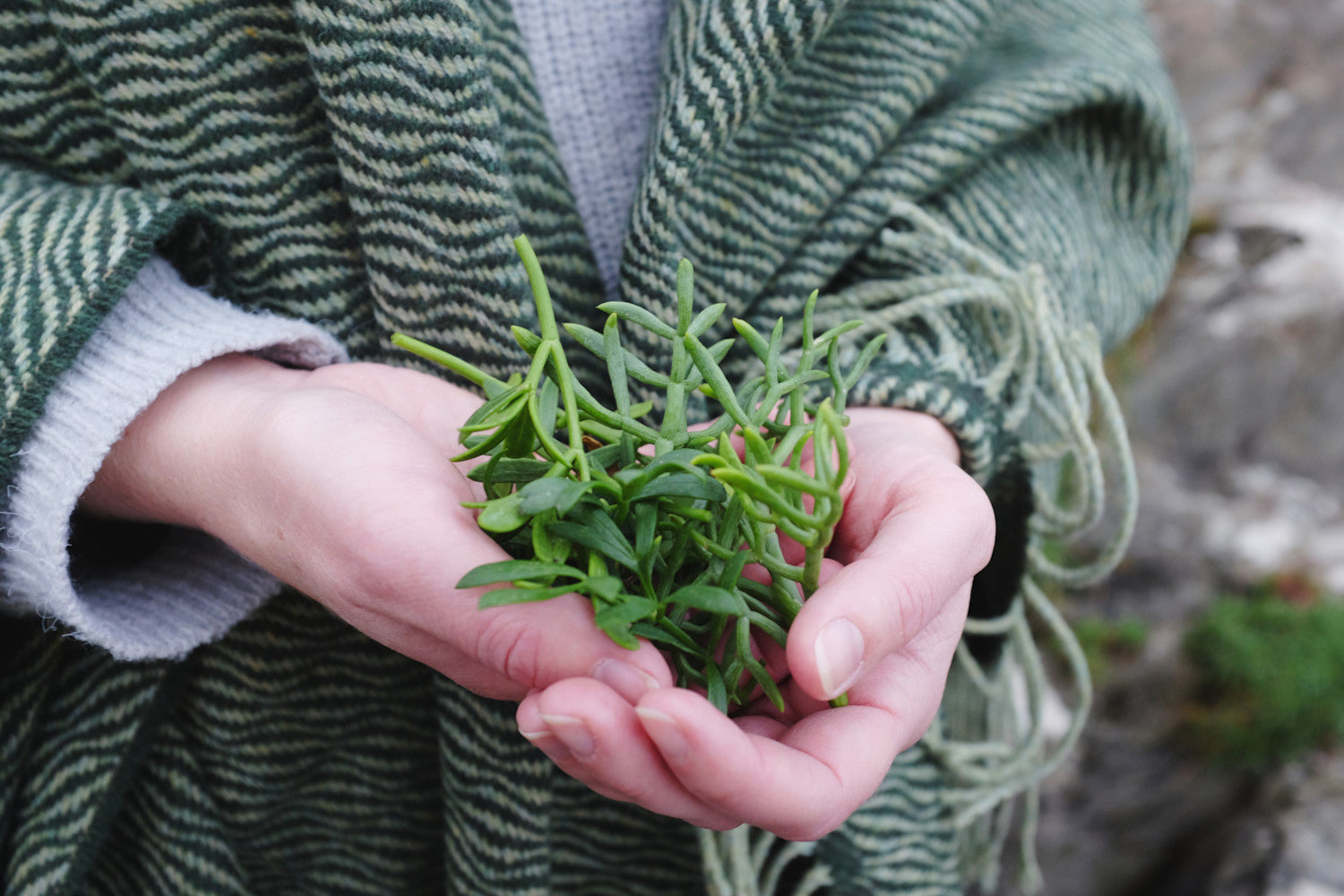How foraging in Devon inspired our wool blankets
Spring is the perfect time for foraging in the UK, whether in the woods, hedgerows or on the coast. When I spotted the unmistakable froth of zingy green Rock Samphire on a recent coastal foraging trip to Devon, my heart skipped a beat! Not only is this little plant good to eat, its vibrant green colour and curvaceous leaves were the inspiration behind one of our new Shipping Forecast blanket designs. If you’re looking for new spring activities outdoors, coastal foraging is rewarding way to while away time in stunning surroundings and (fingers crossed) bring home some tasty wild food for supper.

What is Rock Samphire?
Rock samphire is a perennial sea cliff plant, known for its aniseed flavour. It’s a succulent belonging to the carrot family, with woody stalks and fleshy leaves which grow in antler-like fronds. Rock Samphire was valued by sailors in times past as it’s packed with vitamins and antioxidants to ward off scurvy. Look for it along the coast paths and rocky outcrops of Britain from May to October. If you’re lucky enough spot Rock Samphire growing abundantly, do stop and gather a few handfuls – just be careful never to uproot any wild plant.


Where does Rock Samphire grow?
The plant is at its best from spring to early summer. Later, it can still be used, but you’ll need to be more selective and choose only the fresh green growth that has not yet become woody. The side branches should snap off very easily by hand – if they're at all difficult, the plant is too old to be worth collecting. Rock Samphire can be found growing in dangerous places such as cliff ledges and rock faces, so take care when collecting it.
How can you eat Rock Samphire?
You can eat the leaves, flower buds and stems. Rock Samphire is also known as Sea Fennel and Sea Asparagus, giving a clue to its flavour and texture. In spring, the plant is at its most tender and the leaves and stems can be simply steamed with butter and a squeeze of lemon. Later in the year, pickled Rock Samphire is delicious, allowing you to preserve and enjoy its aromatic, salty flavour for a little longer. Try this pickled rock samphire recipe and use in a similar way to capers.


What is the difference between Rock Samphire and Marsh Samphire?
In fact, the two plants are not related but can be cooked in similar ways. Marsh Samphire has vibrant green stalks similar to baby asparagus, with a distinctive crisp and salty taste. It can be used raw in a salad, though it tends to be very salty, so is more often boiled or steamed for a few minutes.
Marsh Samphire can be found in saltmarshes and around beaches where it grows in a low carpet, while Rock Samphire tends to be found growing in clumps on rocks and cliffs. Marsh samphire is the trendier type now widely available in restaurants and fishmongers, whereas you will need to forage Rock Samphire for yourself!
How did Rock Samphire inspire The British Blanket Company’s new Special Edition blanket design?
The Ripple weave focusses in on the flora and fauna within coastal landscapes: fish, seashells and plants. The design is eye-catching and graphic, with curvaceous stripes running across the entire blanket. In the case of the Rock Samphire blanket, it was flowing shape of the leaf fronds blowing gently in the breeze, and the fresh green colours, that inspired the design.


The Shipping Forecast special edition blanket collection is the latest new range by The British Blanket Company. This collection of six beautiful blankets was inspired by the wild natural landscapes, flora and fauna of the British coastline. Each throw is woven from the softest merino lambswool at a traditional mill in Yorkshire. These are strictly limited and collector’s items of the future, so be one of the first to order now!














